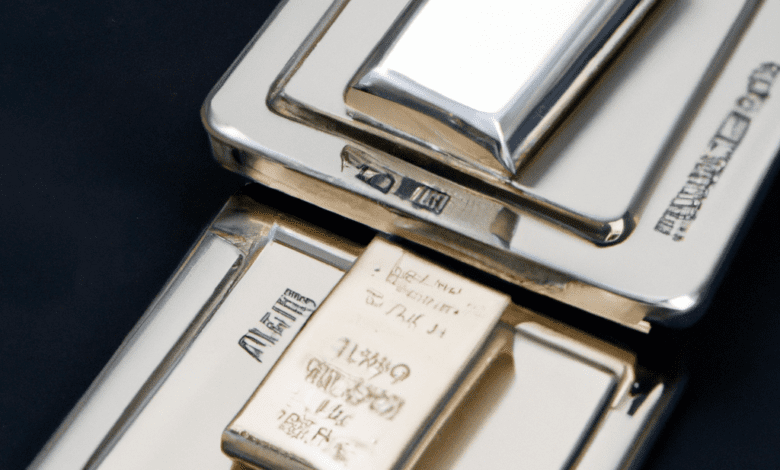Platinum vs. Palladium: A Comprehensive Investment Guide to Properties, Trends, and Future Potential

In the ever-evolving world of precious metals, investors often find themselves at a crossroads when deciding between two of the most coveted choices: platinum and palladium. Both metals boast unique characteristics and applications, making them valuable assets in various industries, from automotive manufacturing to jewelry design. However, as investment vehicles, they present distinct opportunities and challenges that can significantly impact an investor's portfolio. In this article, we delve into the fundamental differences between platinum and palladium, exploring their key properties and uses, while also examining market trends and pricing to provide insights into their historical performance and future projections. Additionally, we will discuss effective investment strategies to help you determine which metal may be the better addition to your investment portfolio. Whether you are a seasoned investor or just starting to explore the world of precious metals, understanding the nuances of platinum and palladium is essential for making informed financial decisions.
- 1. **Understanding the Basics: Platinum vs. Palladium – Key Properties and Uses**
- 2. **Market Trends and Pricing: Analyzing Historical Performance and Future Predictions**
1. **Understanding the Basics: Platinum vs. Palladium – Key Properties and Uses**
Platinum and palladium are both precious metals that belong to the platinum group of metals (PGMs), and while they share some similarities, they also exhibit distinct properties and uses that can influence their investment appeal.
Platinum is a dense, malleable metal with a silvery-white appearance. It is highly resistant to corrosion and tarnishing, making it an excellent choice for various applications. One of its primary uses is in catalytic converters, which are essential for reducing harmful emissions in vehicles. Additionally, platinum is prized in the jewelry industry for its durability and luster, often seen as a premium alternative to gold. Beyond these applications, platinum is also utilized in electronics, dentistry, and certain chemical processes due to its catalytic properties.
Palladium, on the other hand, is lighter and more abundant than platinum, with a slightly lower melting point. It too is widely used in automotive catalytic converters, where it plays a critical role in converting harmful gases into less toxic emissions. The demand for palladium has surged in recent years, particularly as stricter environmental regulations have pushed automakers to adopt more efficient technologies. Beyond automotive applications, palladium is also found in electronics, dental materials, and various industrial processes.
When considering investment potential, it's important to note that both metals are influenced by supply and demand dynamics that can vary significantly. Platinum's supply is often more constrained due to its limited mining locations, primarily in South Africa and Russia, while palladium has seen increased production from sources such as Russia and South Africa, which can affect pricing differently. Furthermore, the industrial demand for these metals can fluctuate based on technological advancements and changes in environmental policies that prioritize cleaner emissions.
In summary, understanding the fundamental properties and uses of platinum and palladium is essential for making informed investment decisions. Each metal has unique characteristics that cater to specific industries and applications, and these factors can significantly impact their market performance. As investors weigh their options, they must consider not only the current market conditions but also the long-term trends that could influence the demand for each metal.
When it comes to investing in precious metals, both platinum and palladium have garnered significant attention, each offering unique characteristics and potential benefits. Platinum, often associated with luxury and rarity, is primarily used in automotive catalytic converters, jewelry, and various industrial applications. Its dense, malleable nature makes it highly sought after in various high-end markets. Historically, platinum has been valued higher than gold, but its price can be volatile, influenced by supply-demand dynamics and economic conditions.
On the other hand, palladium has gained prominence in recent years, particularly due to its increasing use in automotive manufacturing. As stricter emissions regulations are implemented globally, the demand for palladium has surged, making it an attractive investment option for those looking to capitalize on the automotive industry's transition towards cleaner technologies. Additionally, palladium's price has seen remarkable growth, often outpacing that of platinum, which can be appealing for investors seeking high returns.
When comparing these two metals, it's crucial to consider market trends, industrial applications, and geopolitical factors. Platinum, while traditionally seen as a safe-haven asset, has faced challenges due to a reduction in diesel vehicle production and a shift towards electric vehicles, affecting demand. Conversely, palladium's robust market demand has led to supply constraints, resulting in significant price increases.
Investors should also evaluate their risk tolerance and investment goals. Platinum may offer long-term stability, while palladium can provide short-term gains, albeit with higher volatility. Diversification strategies that include both metals could help mitigate risks and capitalize on their respective market dynamics. Ultimately, the decision between platinum and palladium as an investment should be informed by thorough research and an understanding of how each metal fits into the broader economic landscape.
2. **Market Trends and Pricing: Analyzing Historical Performance and Future Predictions**
When evaluating platinum and palladium as investment options, it's essential to analyze their historical performance and market trends, as these factors can provide valuable insights into future pricing movements.
Historically, platinum has been regarded as a more stable investment compared to palladium, primarily due to its broader industrial applications and longer-standing presence in the global market. For much of the late 20th century, platinum was often priced higher than gold, driven by its use in the automotive industry, jewelry, and electronics. However, the market dynamics began to shift in the early 2000s, as the demand for palladium surged, primarily due to its increasing use in catalytic converters for gasoline-powered vehicles. This shift led to periods where palladium outperformed platinum significantly, culminating in a notable price spike around 2018 and 2019 when palladium prices reached all-time highs, driven by stricter emissions regulations and a growing shift towards gasoline vehicles.
In contrast, platinum faced challenges during the same period, with a decline in demand from the automotive sector as manufacturers shifted towards palladium and electric vehicles began to gain traction. Economic factors, such as fluctuations in mining supply from major producers and changes in global demand, have also influenced platinum's pricing. The COVID-19 pandemic further impacted both metals, with supply chain disruptions and changing consumption patterns affecting their market values.
Looking ahead, analysts predict that the future of platinum and palladium will be shaped by several key factors, including the transition to electric vehicles, advancements in technology, and evolving regulatory frameworks. While palladium may continue to see strong demand in the short term due to its role in gasoline engines, the growing adoption of electric vehicles could dampen this trend in the long run. Conversely, platinum's potential for use in hydrogen fuel cells and its comparative abundance may position it favorably as green technologies gain momentum.
Ultimately, both metals present unique investment opportunities, but their market trends and pricing histories suggest that investors should carefully consider their long-term strategies and risk tolerances. As the automotive industry evolves and new technologies emerge, keeping a close eye on market developments will be crucial for making informed investment decisions in platinum and palladium.
In conclusion, both platinum and palladium present compelling investment opportunities, each with its unique advantages and challenges. While platinum is renowned for its versatility and historical significance in various industries, including jewelry and automotive catalytic converters, palladium has surged in popularity due to its crucial role in emissions reduction technologies and its limited supply.
As we analyzed market trends and pricing, it became clear that both metals have experienced significant volatility, influenced by factors such as industrial demand, geopolitical tensions, and shifts in consumer preferences. Investors must weigh these dynamics carefully, along with their personal financial goals and risk tolerance.
Ultimately, the decision between investing in platinum or palladium hinges on individual circumstances and market outlook. While palladium has shown remarkable short-term gains, platinum’s potential for long-term value appreciation cannot be overlooked, especially in a rapidly evolving economy that is increasingly focused on sustainability. By staying informed and considering the broader market context, investors can make educated choices that align with their investment strategies. Whether one opts for platinum or palladium, both metals remain integral to the conversation around precious metals investing, making them worthy of consideration in any diversified portfolio.





